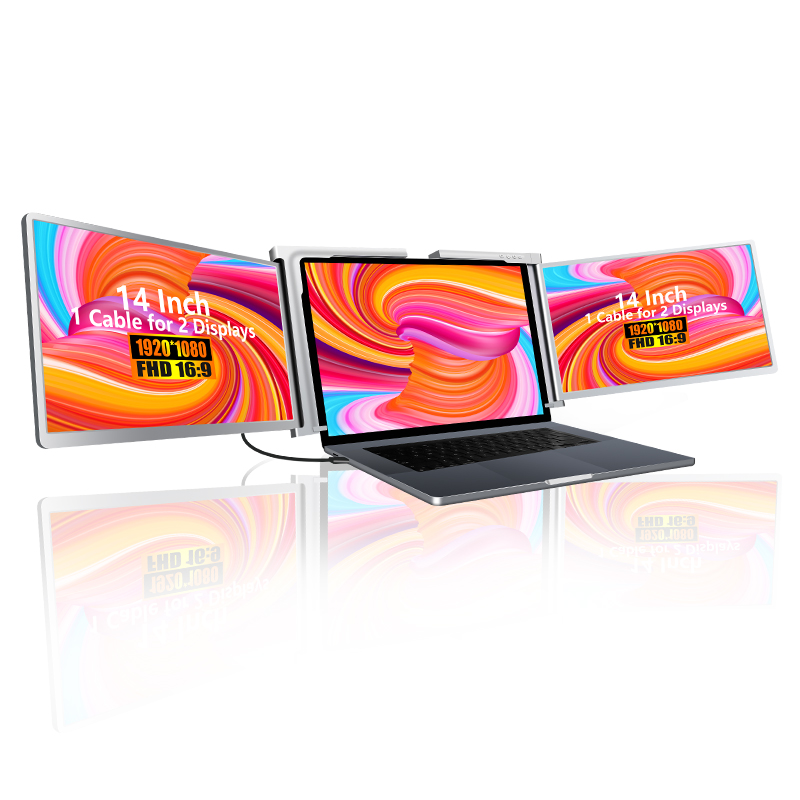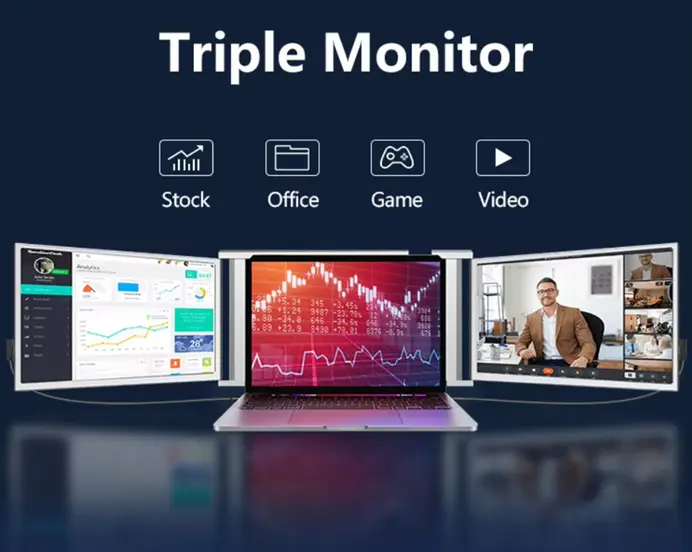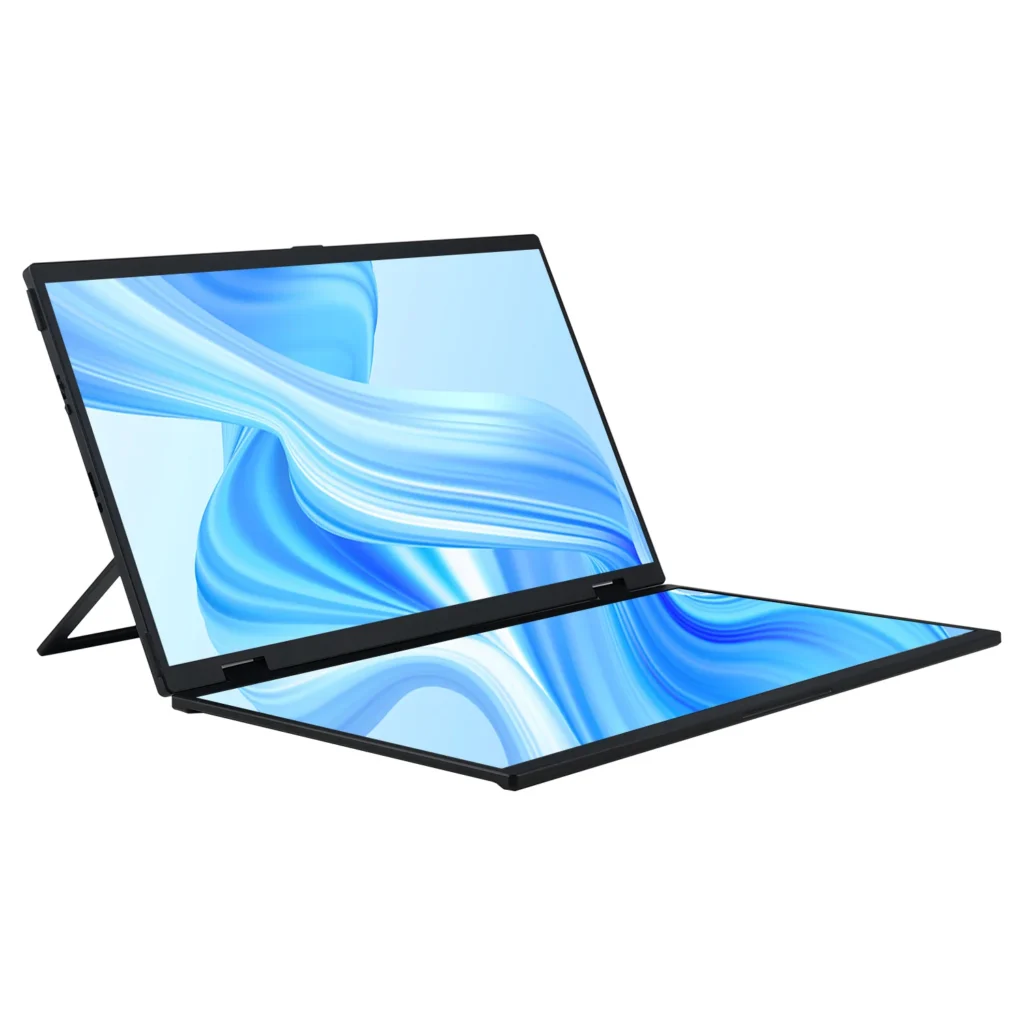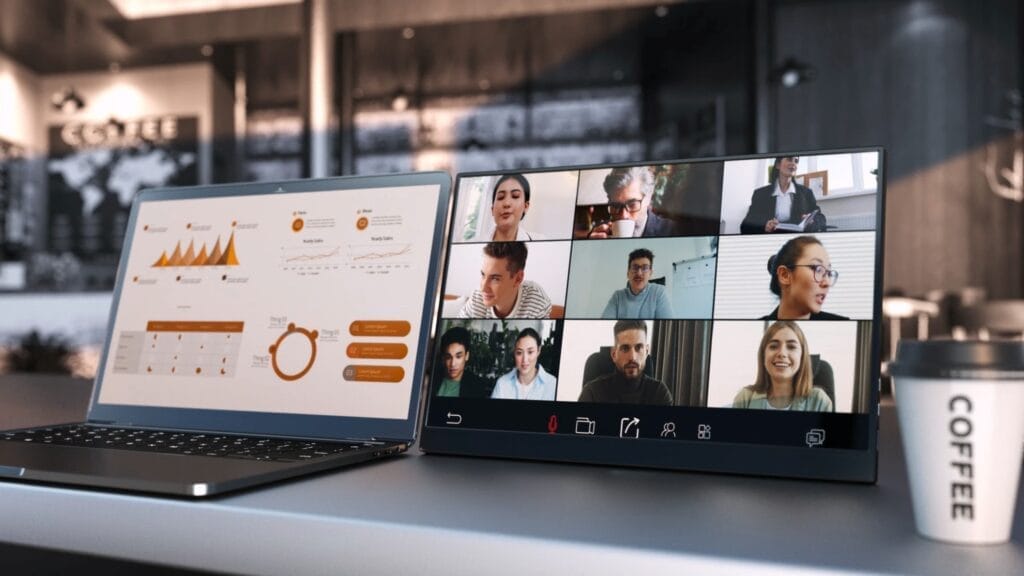In an increasingly digital world, the demand for enhanced productivity and efficient multitasking has led many professionals to adopt multiple screen setups with their laptops. While the benefits are clear—such as improved workflow and better organization—managing multiple screens can present challenges.

1. Setting Up Your Workspace: Ergonomic Considerations for Multi-Screen Use
Creating an ergonomic workspace is essential for maintaining comfort and reducing strain during long hours of work. When setting up multiple screens, consider the following:
- Screen Height and Distance: Position your primary laptop screen at eye level to prevent neck strain. If you’re using external monitors, ensure they are at a similar height and distance. A general rule is to keep the top of the screen at or just below eye level, about an arm’s length away.
- Monitor Arrangement: For optimal viewing, arrange your screens based on your workflow. If you primarily use one screen for tasks like writing or coding, position it directly in front of you. Secondary screens can be angled slightly towards you for easier access.
- Chair and Desk Setup: Invest in an ergonomic chair and adjustable desk to support good posture. Ensure your feet are flat on the ground, and your arms are at a comfortable angle while typing.
2. Choosing the Right Cables and Adapters for Seamless Connectivity
A smooth multi-screen setup begins with the right cables and adapters. Ensure you have:
- Compatible Ports: Check the ports on your laptop and monitors. Common types include HDMI, DisplayPort, USB-C, and VGA. Choose cables that match these ports.
- Quality Cables: Invest in high-quality cables to avoid connectivity issues and ensure optimal display quality. Poor-quality cables can lead to flickering or display errors.
- Docking Stations: For a cleaner setup, consider using a docking station. Docking stations provide multiple ports and can charge your laptop simultaneously, reducing cable clutter.
3. Organizing Your Digital Environment: Tips for Window Management
Managing multiple screens isn’t just about physical setup; it’s also about digital organization. Here are some strategies for effective window management:
- Utilize Virtual Desktops: Many operating systems allow you to create virtual desktops. This feature lets you group applications by task or project, making it easier to switch between different workflows.
- Snap Windows: Use window-snapping features to arrange your applications efficiently. For instance, on Windows, you can drag windows to the edges of the screen to snap them into place, creating a split-screen view.
- Keyboard Shortcuts: Familiarize yourself with keyboard shortcuts for moving and resizing windows. This will save time and improve your workflow as you can quickly rearrange windows without relying on your mouse.

4. Enhancing Productivity: Recommended Software for Multi-Screen Users
Certain software applications can significantly improve your productivity when working with multiple screens:
- DisplayFusion: This software enhances multi-monitor setups, allowing you to control your screens more effectively. It offers features like custom wallpaper management, window snapping, and multi-monitor taskbars.
- Microsoft PowerToys: This free utility includes tools like FancyZones, which allows you to create custom window layouts. This is particularly useful for organizing your workspace on multiple screens.
- Trello or Asana: For task management, using project management tools like Trello or Asana on a secondary screen can help you keep track of tasks while working on other projects.
5. Optimizing Display Settings for Consistent Visuals Across Screens
To ensure a seamless experience across multiple screens, optimizing display settings is crucial:
- Match Resolutions: Try to use monitors with similar resolutions. If that’s not possible, adjust the resolution settings on each monitor to ensure consistency. This prevents visual discrepancies when moving windows between screens.
- Color Calibration: If color accuracy is essential for your work (like graphic design or photo editing), consider calibrating your monitors. This ensures that colors appear the same across all displays.
- Adjust Brightness and Contrast: Ensure that brightness and contrast levels are similar on all monitors. This helps reduce eye strain and creates a more cohesive viewing experience.
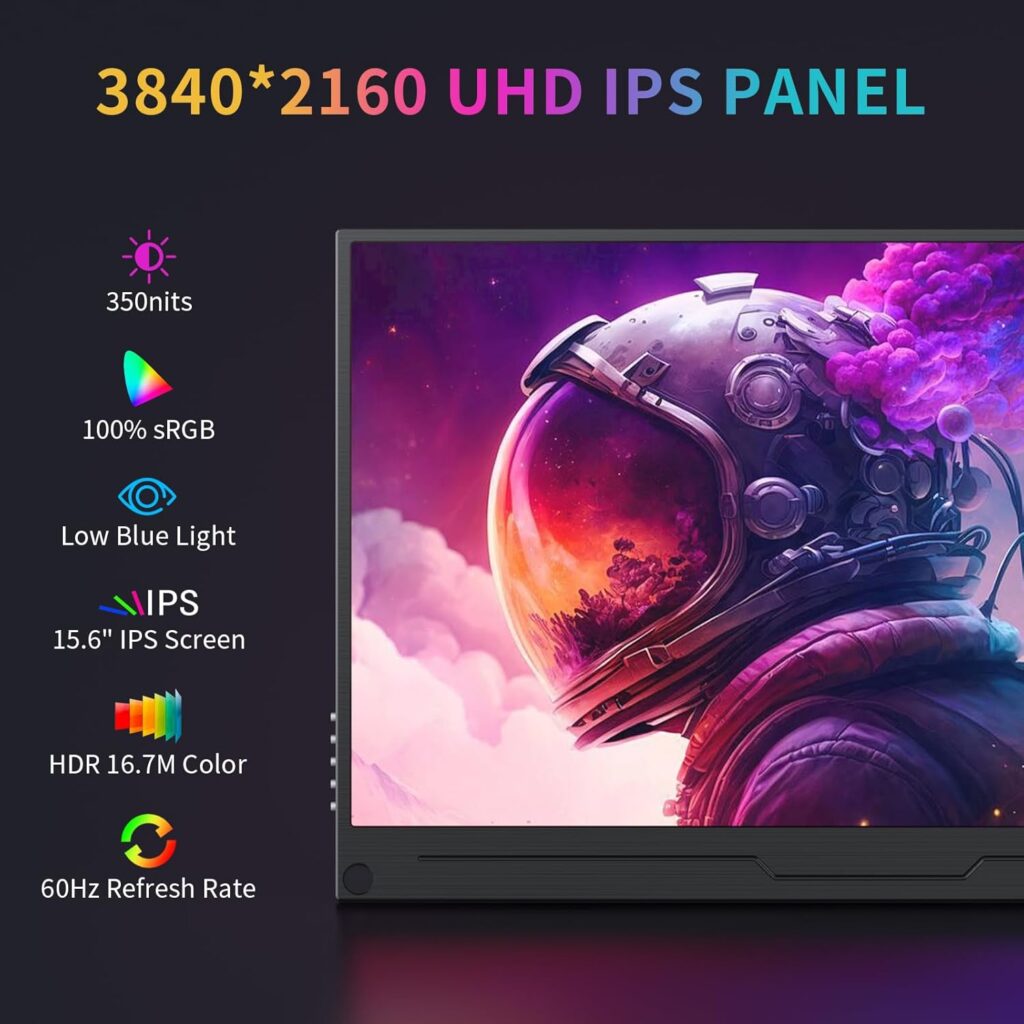
6. Maintaining a Clutter-Free Workspace: Cable Management Strategies
A tidy workspace can enhance focus and productivity. Here are some cable management strategies to consider:
- Cable Ties and Clips: Use cable ties or clips to bundle cables together and keep them organized. This prevents tangling and makes it easier to identify each cable.
- Cable Management Sleeves: These sleeves can cover multiple cables, creating a cleaner look. They are especially useful if you have a lot of wires running from your desk to the monitors.
- Under-Desk Solutions: Consider using under-desk trays or hooks to route cables out of sight. This keeps your workspace looking neat and reduces distractions.
Conclusion
Managing multiple screens with your laptop can significantly enhance your productivity and workflow when approached thoughtfully. By setting up your workspace ergonomically, choosing the right cables, organizing your digital environment, utilizing productivity software, optimizing display settings, and maintaining a clutter-free workspace, you can create a seamless multi-screen experience. Embrace these best practices to take full advantage of your multi-screen setup and enjoy a more efficient work process.
